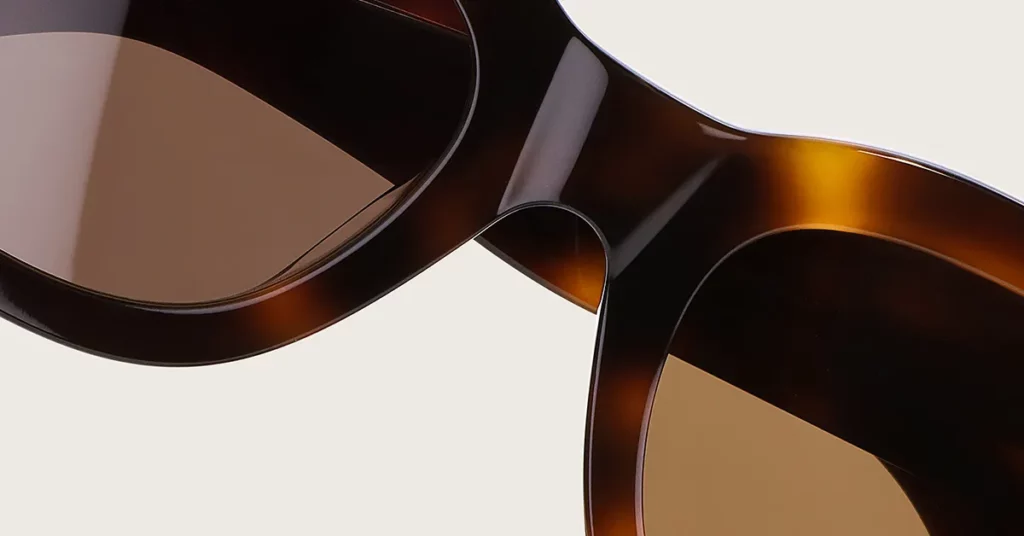Italian acetate is best for fashion-forward brands needing vibrant colors and artistic patterns, commanding about 60% of the high-end market. Japanese acetate is ideal for luxury brands focused on durability and precision, with 80% of its frames retaining their shape after five years of use. Your choice depends on whether your brand story is about artistry or engineering.
A Founder’s Choice: The “Aura” Eyewear Story
Let’s talk about Sarah, the founder of a new brand called “Aura.” She wants to bridge timeless quality and modern design. Her customers value understated luxury and expect their eyewear to be a design statement. Like you, she faces a fundamental choice: the expressive artistry of Italy or the enduring precision of Japan?
This decision goes beyond the material itself; it affects her supply chain, cost, and brand story. Sarah needs a clear framework to translate the technical differences into a smart business decision. This guide is that framework. As we go through the details, think about your own brand and which path best fits your mission.
At a Glance: Key Sourcing Differences
Understanding the core differences between Italian and Japanese acetate begins with examining how each material performs. This comparison table breaks down the key attributes that directly impact your product quality, cost, and brand. Use this to quickly see how each material excels in different areas.
| Feature | Italian Acetate | Japanese Acetate |
| Density & Feel | Lighter, softer composition | Higher density, substantial feel |
| Luster & Finish | Excellent surface quality | Deep, liquid-like hand-polished finish |
| Color & Pattern | Unparalleled vibrancy and variety | Limited but refined color options |
| Durability | Excellent resistance to breakage | Superior shape retention over years |
| Curing Time | Optimized for fashion calendars | Extended (3+ months) for stability |
| Cost Level | Premium but accessible | Highest tier, a true investment |
| Brand Fit | Artistic, fashion-forward | Heritage, engineering-focused |
The Bottom Line: This table isn’t about which material is “better” overall, but which is better for your specific goal. If your brand is about bold, seasonal art, the chart points to Italy. If it’s about lifetime quality and precision, it points to Japan.

The Art vs. The Science: A Material Deep Dive
Now that you have the high-level view, let’s explore why these materials are so different. Their unique properties come from distinct philosophies in how they are made, from the chemical composition to the final polish.
Italian Acetate: The Benchmark for Artistry
Italian acetate is the global standard for color, pattern, and artistic possibility. It’s a material designed for expression. This is largely thanks to Mazzucchelli 1849, the world’s most influential acetate producer, who has turned material production into an art form.
A Softer Mix for Superior Color
The magic of Italian acetate starts with its composition, which is slightly softer. This means that dyes can penetrate the material more deeply, creating vibrant colors that seem to glow from within.
Simple Analogy: Think of it like watercolor paint on special paper. The absorbent paper allows the colors to blend seamlessly, creating a depth and movement that you can’t get on a standard sheet. That’s how Italian acetate holds its rich, layered colors.
The Business Case: Aesthetic Variety
For your brand, this means you can offer an almost unlimited range of unique looks. Italian acetate allows you to build distinctive seasonal collections that respond to fashion trends, giving you a powerful marketing advantage. Your key value proposition becomes aesthetic differentiation.
Key Supplier Spotlight: Mazzucchelli 1849 is the undisputed leader. Their legacy is built on creating iconic patterns like “Havana” (tortoiseshell), a process that involves artfully mixing slivers of colored acetate. Their influence is so large that in 2021, Luxottica acquired a stake in the company to secure its supply chain.
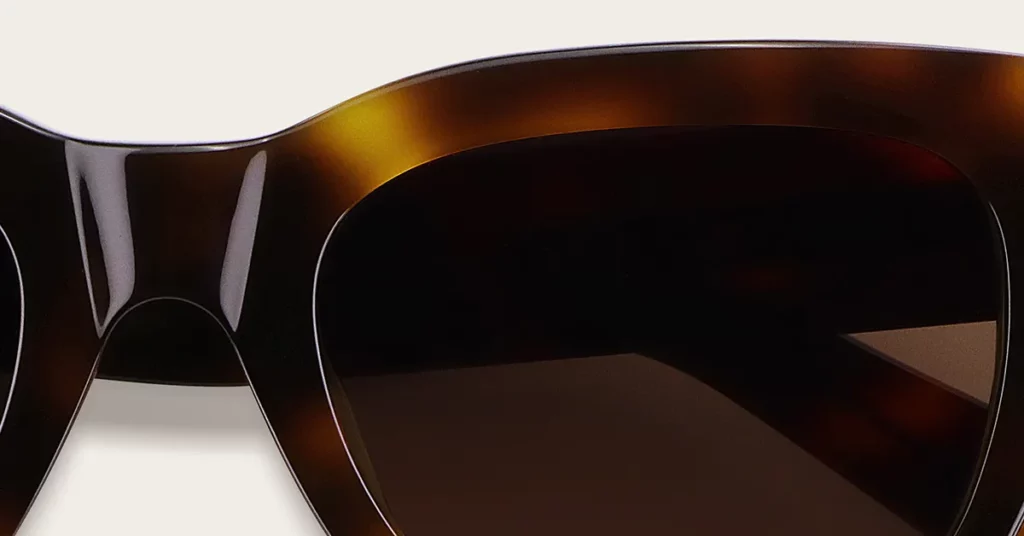
Japanese Acetate: The Pursuit of Perfection
Japanese acetate manufacturing is a testament to a culture of meticulous craftsmanship and longevity. The focus isn’t on seasonal trends but on creating a material that is technically perfect and will perform flawlessly for decades.
More Density, Less Plasticizer
Japanese acetate feels denser and more substantial in your hand. This is because it’s made with less plasticizer and cured for a much longer time, creating a more compact material. Italian acetate, by contrast, has a slightly softer composition.
The Bottom Line: Choose Japanese acetate if your brand promise is a luxurious, weighty feel. Opt for Italian if you need more flexibility for sculptural designs.
The Art of the Polish
The signature of Japanese acetate is its deep, liquid-like luster. This isn’t a coating; it’s the result of an intensive, multi-stage hand-polishing process that can take months. Craftsmen tumble and polish the frames repeatedly until the finish is perfect and incredibly durable.
Critical Warning: Rushing the curing or polishing process compromises the long-term performance of the frame. Japanese manufacturers treat these extended timelines as a non-negotiable step for achieving superior quality.
Key Supplier Spotlight: Takiron Rowland is a name synonymous with Japan’s commitment to material purity. They produce exceptionally consistent acetate sheets that enable the thin yet strong minimalist designs for which Japanese eyewear is famous.
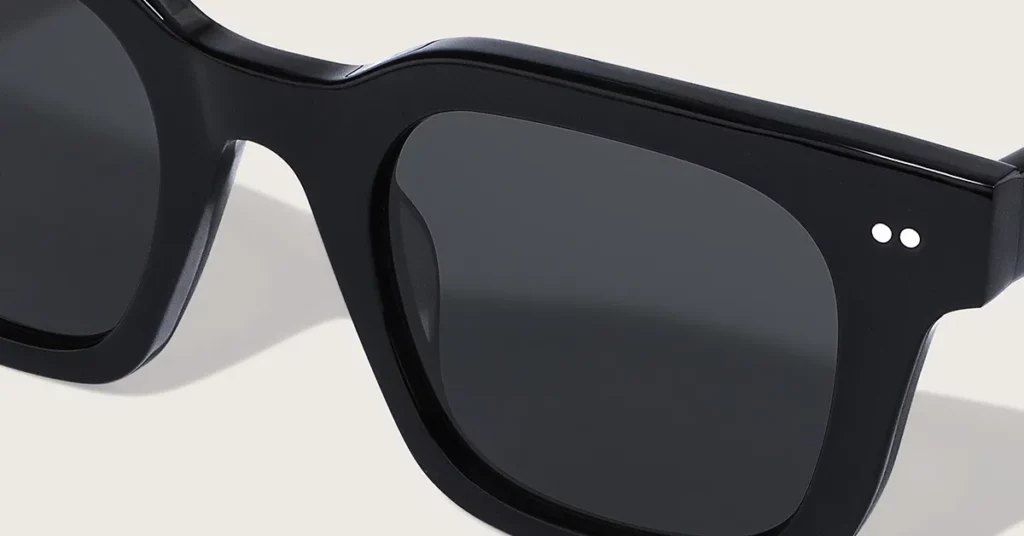
The Factory Floor: Two Philosophies of Craft
How the raw acetate is handled, cured, and finished creates two fundamentally different products. The Italian process is built for artistic expression at scale, while the Japanese process is built for artisanal precision.
The Italian Process: Artistic Volume
Italian manufacturing masterfully balances artistic quality with the demands of fashion. This philosophy allows brands to launch fresh, creative collections seasonally without sacrificing the premium feel customers expect.
- How Patterns Are Made: They use the block acetate method, where artisans mix colored acetate slivers and press them into large blocks. When these blocks are sliced, they reveal the flowing, organic patterns that make the material famous.
- Faster Curing Times: The curing process is optimized to deliver stable, high-quality material that fits within the fast-paced fashion calendar.
- Business Impact: This gives your brand the flexibility to experiment with new designs and react to trends, which is essential for any fashion-forward company.
The Japanese Process: Artisanal Precision
Japanese manufacturing prioritizes long-term performance over speed. This patient approach results in acetate that excels in durability, making it perfect for brands built on engineering and lifetime value.
- The Culture of Craft: In Sabae City, Japan’s eyewear capital, over 100 specialized workshops collaborate. Some focus only on polishing, others only on hinges. This ecosystem creates an unmatched level of expertise.
- The Curing Imperative: Japanese manufacturing prioritizes longevity, letting acetate sheets cure for three months or more. This means the material becomes exceptionally stable, resisting warping for years. Italian manufacturing is optimized for fashion, with faster curing times.
- The key trade-off is speed versus stability; your production calendar and quality promise will determine which is right for you.
- Business Impact: You face longer lead times and higher costs, but you gain an unmatched level of stability. This investment virtually eliminates warranty claims related to warping or finish degradation.
Remember This: Sabae’s manufacturers pioneered the world’s first titanium frames in 1983. This same culture of technical innovation and excellence is applied to their acetate production today.
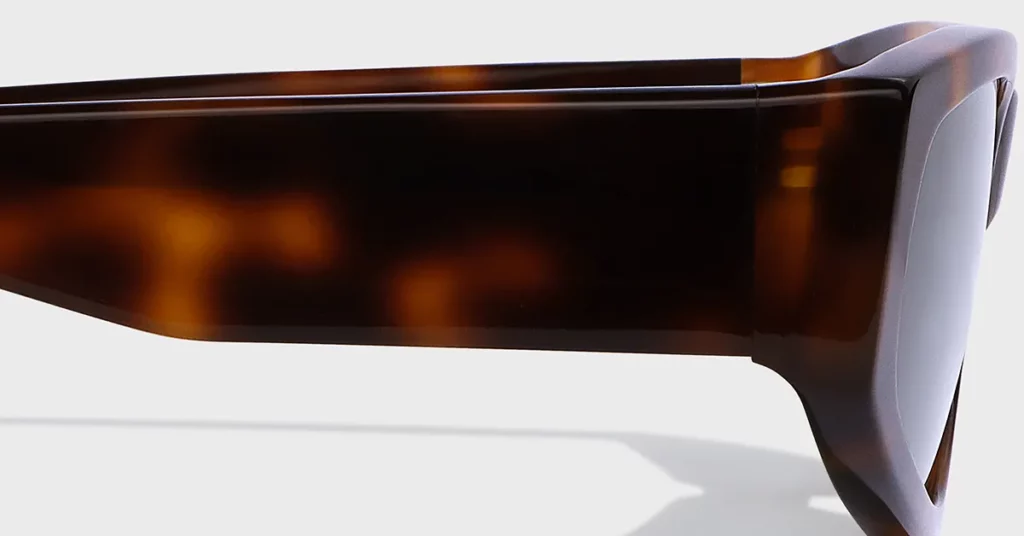
Making the Strategic Choice for Your Brand
So, how do you decide? The right material is the one that aligns with your brand’s DNA, your customer, and your business model.
When to Choose Italian Acetate
Choose Italian acetate if your brand is about art, expression, and fashion. The material’s versatility is its greatest strength, allowing you to create eyewear that is a true style statement.
- Your Brand Is: Fashion-Forward, Artistic, or Trend-Driven.
- Your Value Proposition Is: Unique Colors and Bold, Expressive Designs.
- Your Target Customer: Values seasonal styles and sees eyewear as a key fashion accessory.
- Best Application: Perfect for thicker, more sculptural frames where the material’s pattern is the hero.
When to Choose Japanese Acetate
Choose Japanese acetate if your brand is about engineering, heritage, and understated luxury. The material’s performance supports a promise of quality that lasts a lifetime.
- Your Brand Is: Heritage, Luxury, Minimalist, or Engineering-Focused.
- Your Value Proposition Is: “Buy it for Life” Durability and a Perfect Fit.
- Your Target Customer: An educated consumer who invests in quality and long-term value.
- Best Application: Ideal for both thin, minimalist frames that require high strength and substantial, heirloom-quality pieces.
A Pro’s Guide to Spotting Premium Acetate
Once you have samples, how do you judge their quality? As an expert, I look for small details that reveal the quality of the material and craftsmanship.
Telltale Signs of Italian Acetate
- Color Clarity: Look for exceptional vibrancy and depth. The colors should appear to be part of the material, not sitting on top of it.
- Pattern Flow: In a tortoiseshell pattern, the design should look organic and seamless, not repetitive or machine-made.
- Warm Feel: Premium acetate feels warm and smooth against the skin, never cold or plasticky.
Telltale Signs of Japanese Acetate
- Deep Luster: The finish should have a deep, liquid-like gloss that comes from intensive hand-polishing, not a spray-on coating.
- Flawless Hardware: Rivets and hinges should be perfectly flush with the acetate surface, with no gaps or rough edges.
- Satisfying Weight: The frame should have a distinct density and satisfying heft that communicates quality and durability without feeling overly heavy.
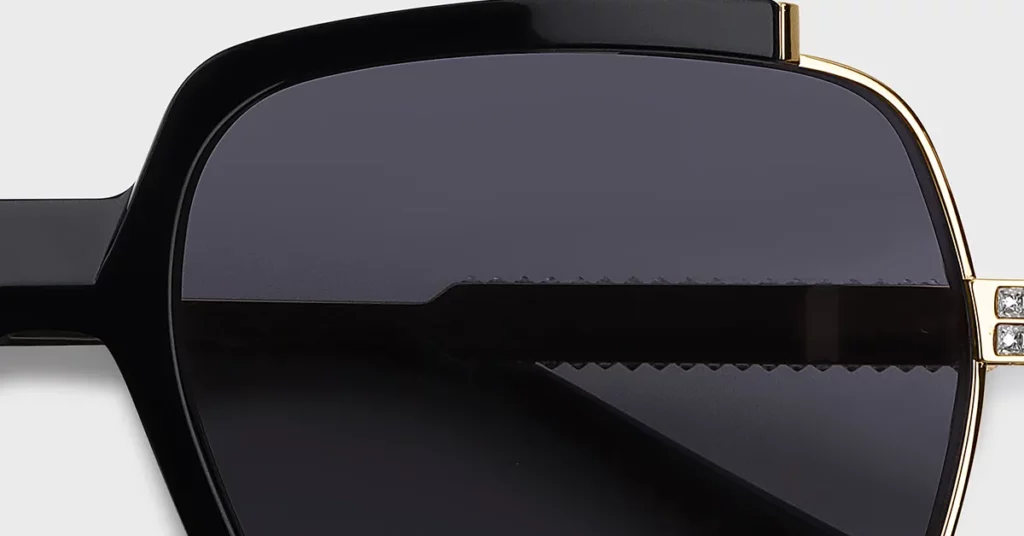
Conclusion
Your choice between Italian and Japanese acetate is a strategic decision that should be guided by your brand’s core identity. Italian acetate offers unparalleled artistic freedom for fashion-forward brands, while Japanese acetate delivers unmatched durability for brands built on engineering and lifetime value. Align your material with your brand story, customer expectations, and production capabilities, and you will have a powerful foundation for success. If you’re ready to explore custom acetate for your collection, let’s talk.
Frequently Asked Questions
1. Is Japanese acetate really worth the higher cost for a new brand?
For brands positioning around lifetime quality, the answer is yes. Its superior durability and shape retention reduce warranty issues and support premium pricing, justifying the initial investment.
2. Can an average consumer tell the difference between them?
An educated consumer certainly can. The deep luster of Japanese frames and the vibrant patterns of Italian ones are visually distinct, and the substantial feel of Japanese acetate is noticeable.
3. If I can’t afford either, what’s key in a Chinese acetate?
Focus on proper curing time. Ask potential suppliers about their curing process. An extended curing period is the single most important factor for ensuring the material’s long-term stability, regardless of its origin.
4. Does one type hold frame adjustments better?
Yes, Japanese acetate holds adjustments better. Its higher density and stability, resulting from reduced plasticizer and a long curing process, mean it retains its shape longer after being fitted.
5. Will choosing Japanese acetate limit my color options?
You will have fewer options compared to Italian acetate. However, the available colors are typically refined and sophisticated. Brands choose Japanese acetate for its performance first and find the classic palette sufficient for their minimalist or heritage aesthetic.

